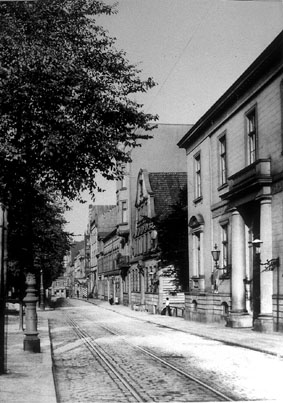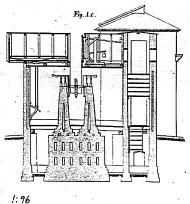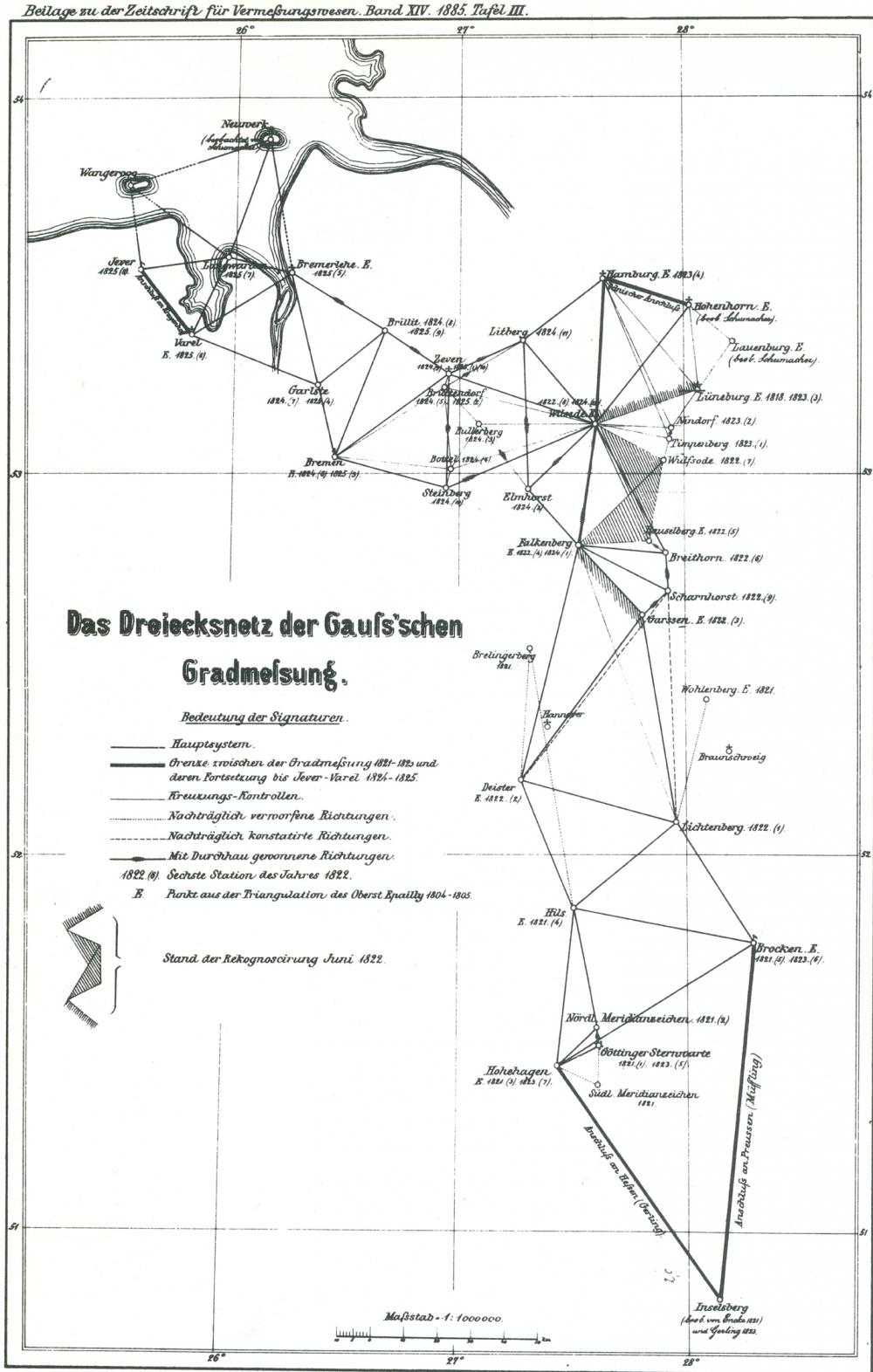
Category of Astronomical Heritage: tangible immovable
Altona Observatory, Germany

Description
Geographical position
Altona Observatory, Denmark (today Hamburg), Palmaille 9, Hamburg
Location
Latitude 53°42’48’’N, Longitude 09°56’34’’E, Elevation 34m above mean sea level.
IAU observatory code
527
Description of (scientific/cultural/natural) heritage
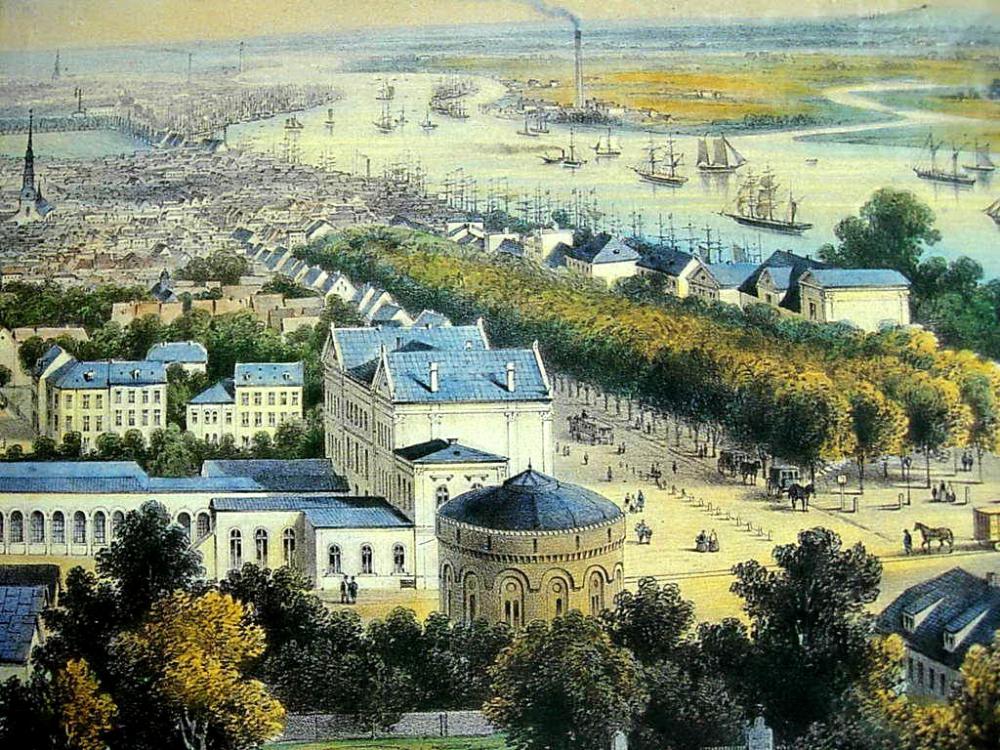
Fig. 1. Altona with the Palmaille (the street with the trees), at the end to the right was the observatory, in the foreground the Railway Station (Stitch, 1850)
The observatory Altona today’s Hamburg-Altona was founded in 1823 by Heinrich Christian Schumacher (1780--1850) and continued to operate until 1873 after his death in 1850.
He studied law in the universities of Kiel and Göttingen, then he was astronomer in Dorpat (today Tartu, Estonia), 1808--1811 Altona and observing astronomer at Repsold’s first Observatory Stintfang, in 1815 Copenhagen Observatory.
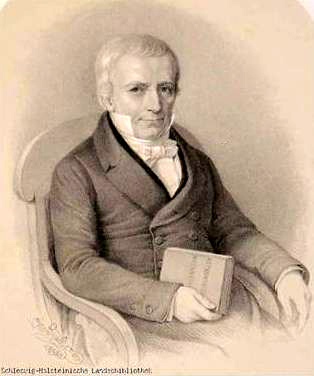
Fig. 2. Heinrich Christian Schumacher (1780--1850), director from 1823 to 1850 (Otto Speckter, 1853)
Until 1864 Altona in Holstein was under Danish administration. This observatory (Palmaille 9) existed from 1823 to 1873. Main instruments were the 10.5-cm meridian circle, a Troughton vertical circle, a 11.7-cm (52 Paris inch) universal instrument (1865) (focal length = 1.95 m, 6 Paris foot), the Repsold Equatorial and a few smaller instruments.
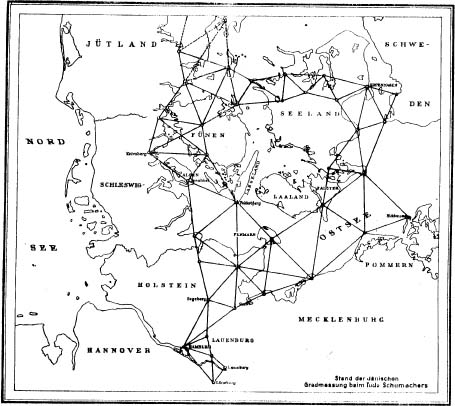
Fig. 3. The Danish Triangulation network continued after the death of Schumacher
Already in 1814 began the first triangulation of Hamburg with Johann Georg Repsold (1770--1830) of Hamburg observatory (*1802). Schumacher initiated a large-scale survey of Jütland from Skagen to Lauenburg in 1817--1821. To connect the Danish measurements to the European survey, Schumacher succeeded in involving Karl Friedrich Gauß (1777--1855) in Göttingen (1821 to 1825, until 1844) with the Hanoverian measurements in the south ("Gaussian land survey") on the Jütland project. The basic apparatus (the Braaker base) for the most accurate measurement of the base length wwas made by Repsold on the occasion of the trigonometric survey of Denmark in 1820.
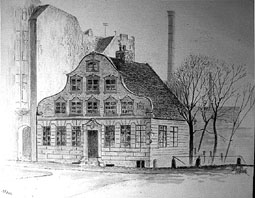
Fig. 4a. The baroque house is Altona Observatory at the Palmaille 9 -- active between 1823 and 1873 (State Archive Hamburg)
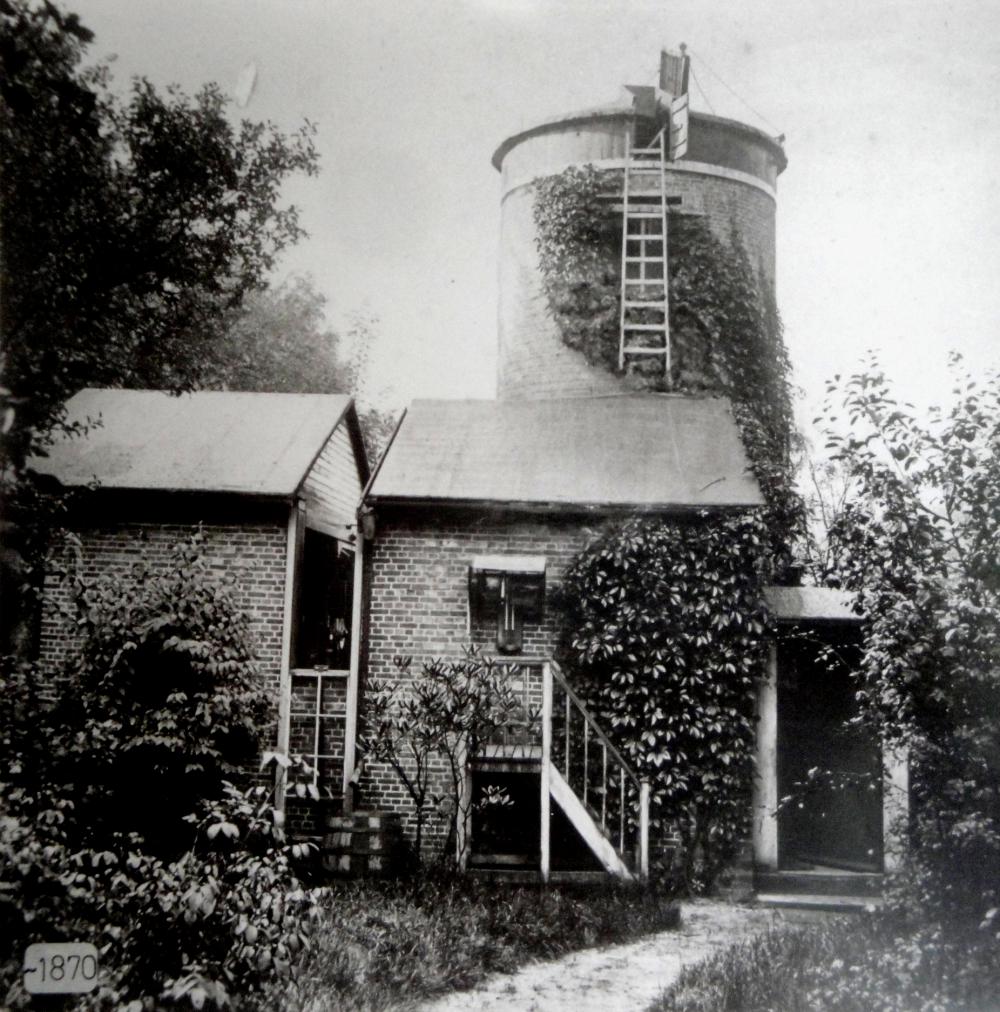
Fig. 4b. The refractor tower of Altona Observatory and the meridian building (Archive Hamburg Observatory)
When after the German-Danish war Schleswig-Holstein came under Prussian rule, the observatory Altona was dissolved in 1871 and relocated to Kiel (1874).
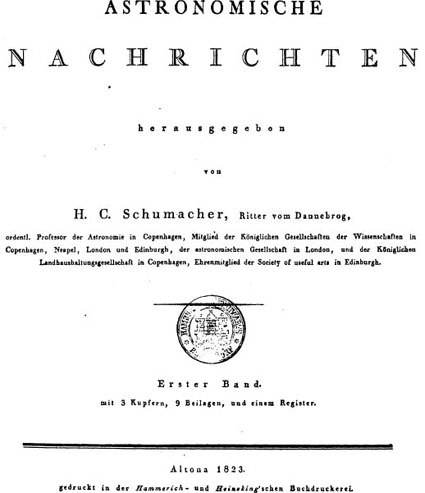
Fig. 5. "Astronomische Nachrichten" (Astronomical News), started by Schumacher in 1821
In Altona Schumacher began in 1821 with the publication of the "Astronomische Nachrichten" (Astronomical Notes), the oldest consistently existing, until today leading astronomical journal.
Here his preface:
"Durch höhere Unterstützung bin ich in den Stand gesetzt, den Astronomen und Mathematikern in diesem Blatte ein Mittel zur schnellen Verbreitung einzelner Beobachtungen und kürzerer Nachrichten, so wie in den Astronomischen Abhandlungen ein Depot für größere Arbeiten anzubieten. Ich lasse die Beiträge der verschiedenen Herrn Verfasser so, wie ich sie von ihnen erhalte, abdrucken; wenn nicht etwa der Druck eine andere Anordnung der Zahlen nöthig macht. Was in englischer, französischer, oder lateinischer Sprache mir zugesandt wird, erscheint im Originale." (With higher support I am able to offer the astronomers and mathematicians in this journal a medium for the rapid dissemination of individual observations and brief messages, as in the astronomical treatises a repository for larger work. I print the contributions of the various authors like I receive them; unless the printing makes a different arrangement of the numbers necessary. Whatever is sent to me in English, French or Latin appears in the original.)
History
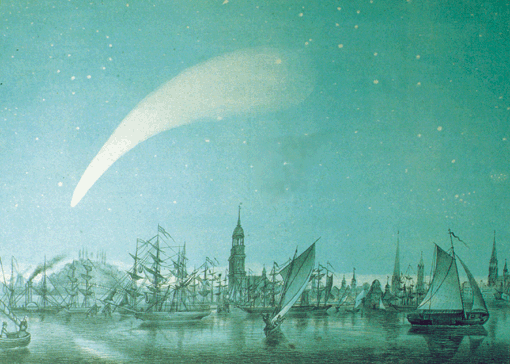
Fig. 6. Comet Donati, observed in Hamburg (September 20/21, 1858) -- and in Altona observatory: Karl [Carl] Ferdinand (1834--1862) recognized gas eruptions against the tail direction
After Schumacher’s death (1850) followed the following directors:
- Adolph Cornelius Petersen (1804--1854), 1850 to 1854,
- Christian August Friedrich Peters (1806--1880), 1854 to 1864 (professor in Kiel since 1872/1874),
- Carl Friedrich Wilhelm Peters (1844--1894), assistant from 1868 to 1872 (then in Kiel, professor in 1882).
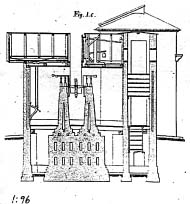
Fig. 7. Meridian circle of Altona Observatory -- Zero point of Jutland geodetic survey network (Jahn: Practical Astronomy, 1834)
Instruments
- 10.5cm Meridian circle,
- Troughton Vertical circle,
- 11.7-cm (52 Paris inch) Universal instrument (1865), (focal length 1.95-m, 6 Paris foot),
- Equatorial, Repsold, Hamburg
- some smaller instruments.
State of preservation
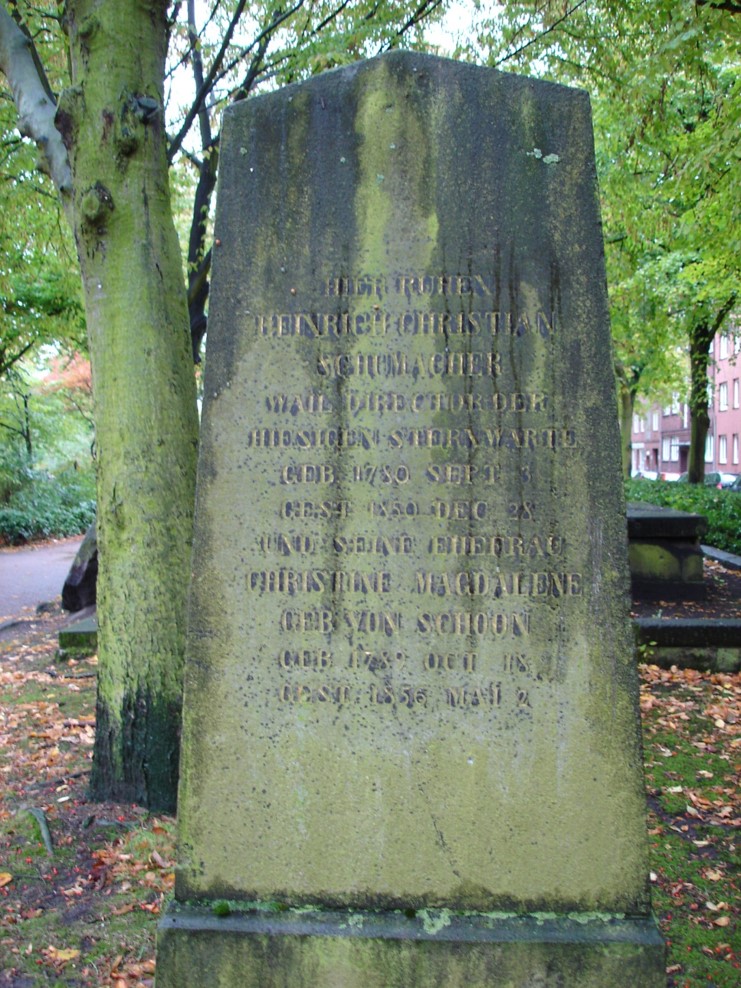
Fig. 8. Grave stone of Schumacher, churchyard of Heilig Geist church in Altona (Photo: Gudrun Wolfschmidt)
The observatory was destroyed in WWII in 1941. But many instruments were brought in 1874 to Kiel and Copenhagen observatories and survived there.
The Altona Meridian is marked at the S-Bahn station "Königsstrasse" (King Street); the grave stone of Schumacher is also there.
Comparison with related/similar sites
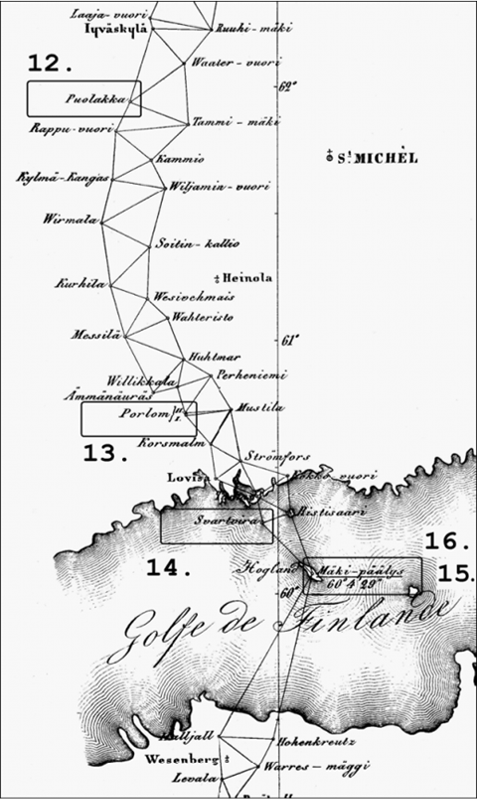
Fig. 10. Struve Geodetic Arc

Fig. 9. Meridian line for surveying Altona (0h30m25s east of Paris) -- in cooperation with Denmark, Hamburg and Kingdom of Hanover, 1821 to 1825, S-Bahn station "Königsstrasse" (Photo: Gudrun Wolfschmidt)
Altona was an important place because of the meridian measurement -- comparable to Tartu and Pulkovo Observtories (Struve Geodetic Arc).
Threats or potential threats
--
Present use
At this site after WWII a new building was erected for the "Bundesforschungsanstalt für Fischerei" (1952), since 2008 renamed "Johann Heinrich von Thünen-Insitut".
Astronomical relevance today
Outstanding research was done in Altona Observatory, but it is since 1873 no longer existing.
References
Bibliography (books and published articles)
- Abalakin, Viktor: Über die Astronomendynastie Struve aus Hamburg-Altona. In: Wolfschmidt, Gudrun (Hg.): Hamburgs Geschichte einmal anders -- Entwicklung der Naturwissenschaften, Medizin und Technik, Teil 3. Hamburg: tredition science (Nuncius Hamburgensis; Band 20) 2011, S. 28-61.
- Hoffmann, Gerd & Karl-Heinz Nerkamp: Heinrich Christian Schumacher -- Der Altonaer Astronom und die Vermessung. Hamburg: Landesbetrieb Geoinformation und Vermessung 2009.
- Jahn, Gustav Adolph: Heinrich Christian Schumacher. In: Gustav Adolph Jahn (Hg.): Unterhaltungen für Dilettanten und Freunde der Astronomie, Geographie und Meteorologie. Leipzig: Heinrich Hunger 1851, Nr. 3 (18. Januar 1851), S. 17-22, Nr. 4 (25. Januar 1851), S. 25-29, Nr. 5 (1. Februar 1851, S. 33-35.
- Lemke, Dietrich: Von einem Altonaer, der auszog die Erde zu vermessen -- Der STRUVE-Bogen als wissenschaftliches Weltkulturerbe in zehn Staaten. In: Wolfschmidt, Gudrun (Hg.): Sonne, Mond und Sterne -- Meilensteine der Astronomiegeschichte. Zum 100jährigen Jubiläum der Hamburger Sternwarte in Bergedorf. Hamburg: tredition (Nuncius Hamburgensis -- Beiträge zur Geschichte der Naturwissenschaften, Band 29) 2013, p. 128-147.
- Lühning, Felix: ,,... eine ausnehmende Zierde und Vortheil"’ -- Geschichte der Kieler Universitätssternwarte und ihrer Vorgängerinnen 1770--1950. Neumünster: Wachholtz Verlag (Sonderveröffentlichungen der Gesellschaft für Kieler Stadtgeschichte, Band 56) 2007.
- Peters, Christian August Friedrich: Notizen über den auf der Altonaer Sternwarte befindlichen Meridiankreis. In: Astronomische Nachrichten 45 (1857), No. 1061, Spalte 66.
- Schramm, Jochen mit Beiträgen von Gudrun Wolfschmidt, Matthias Hünsch und Dieter Engels: Sterne über Hamburg. Die Geschichte der Astronomie in Hamburg. Hamburg: Kultur- und Geschichtskontor 1996, neue Auflage 2010.
- Umland, Regina: Heinrich Christian Schumacher (1780-1850) In: Wolfschmidt, Gudrun (Hg.): Astronomie im Ostseeraum -- Astronomy in the Baltic. Hamburg: tredition (Nuncius Hamburgensis; Band 38) 2018, S. 300--321.
- Wolfschmidt, Gudrun (Hg.): Sonne, Mond und Sterne -- Meilensteine der Astronomiegeschichte. Zum 100jährigen Jubiläum der Hamburger Sternwarte in Bergedorf. Hamburg: tredition (Nuncius Hamburgensis -- Beiträge zur Geschichte der Naturwissenschaften; Band 29) 2013.
- Wolfschmidt, Gudrun (Hg.): Astronomie im Ostseeraum -- Astronomy in the Baltic. Proceedings der Tagung des Arbeitskreises Astronomiegeschichte in der Astronomischen Gesellschaft in Kiel 2015. Hamburg: tredition (Nuncius Hamburgensis -- Beiträge zur Geschichte der Naturwissenschaften; Band 38) 2018.
Links to external sites
- Astronomie in Altona (Virtual Walk in Hamburg -- Cultural history, science and technology, compiled by G. Wolfschmidt)
https://www.fhsev.de/Wolfschmidt/GNT/hh/ast/altona.htm - Struve Geodetic Arc -- UNESCO World Heritage Centre
https://whc.unesco.org/en/list/1187/
Links to external on-line pictures
no information available
No multimedia content published
Currently there is no multimedia content published for this case study







